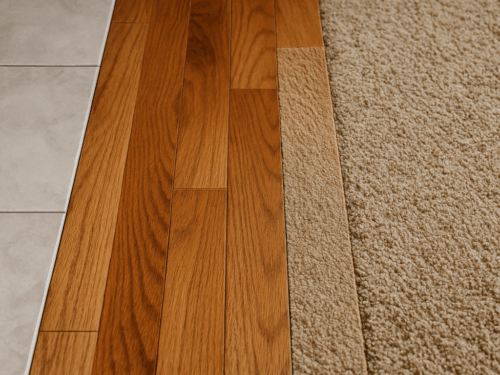
Which Flooring Adds the Most Value to Your Home?
When you’re thinking about upgrading your floors, you’re probably not just doing it for looks — you’re also thinking about how it will affect your home’s value. Whether you’re planning to sell soon or just want to make smart investments for the future, the right flooring can boost resale value, attract more buyers, and even help your home sell faster.
But not all flooring is created equal. Some materials stand the test of time, while others go out of style or wear down quickly. So, which flooring types offer the best return on investment (ROI)? Let’s break it down.
Why Flooring Matters to Home Value
According to real estate experts and home staging professionals, flooring is one of the first things buyers notice. Dirty carpet, outdated tile, or worn-out vinyl can make a house feel neglected — while updated, well-maintained floors make a powerful first impression.
In fact, according to the National Association of Realtors, homeowners who upgrade flooring before selling can recoup an average of 70%–100% of the cost, depending on the material and market.
Top Flooring Types That Add Value
1. Hardwood Flooring
Best for: Long-term value, timeless style, wide appeal
Hardwood has long been the gold standard in flooring — and for good reason. It’s durable, beautiful, and fits nearly every style of home. Many buyers will pay more for a home with hardwood floors over one with carpet or laminate.
Pros:
- Timeless appeal that never goes out of style
- Can be sanded and refinished multiple times
- Highly durable when properly maintained
Cons:
- Higher upfront cost than other options
- Susceptible to moisture and scratching
ROI Estimate: 70%–100% depending on wood type and market conditions
2. Luxury Vinyl Plank (LVP)
Best for: Modern durability, water resistance, affordability
Today’s luxury vinyl plank flooring is lightyears ahead of old-school vinyl. It looks like wood or stone, is waterproof, and holds up incredibly well in busy households — making it a smart choice for kitchens, bathrooms, or basements.
Pros:
- Waterproof and scratch-resistant
- Budget-friendly but stylish
- Easier to install than hardwood or tile
Cons:
- Not as high-end as real hardwood in buyers’ eyes
- Some cheaper options can feel less durable
ROI Estimate: 60%–80%
3. Engineered Hardwood
Best for: High-end look with better moisture resistance
Engineered hardwood gives you the beauty of real wood with added stability. It’s made of a real wood veneer over a layered plywood base, which means it holds up better in humid or slightly wet conditions than solid hardwood.
Pros:
- Looks just like solid hardwood
- More moisture-resistant than solid wood
- Can be less expensive than full hardwood
Cons:
- Can usually only be refinished once
- Still not ideal for high-moisture areas
ROI Estimate: 60%–90%
4. Tile Flooring
Best for: Bathrooms, kitchens, hot climates
Ceramic or porcelain tile adds durability and water resistance — especially in areas where spills or splashes are common. Buyers in hot climates often appreciate the cool feel of tile underfoot.
Pros:
- Long lifespan and easy maintenance
- Waterproof and ideal for wet areas
- Wide variety of designs and patterns


